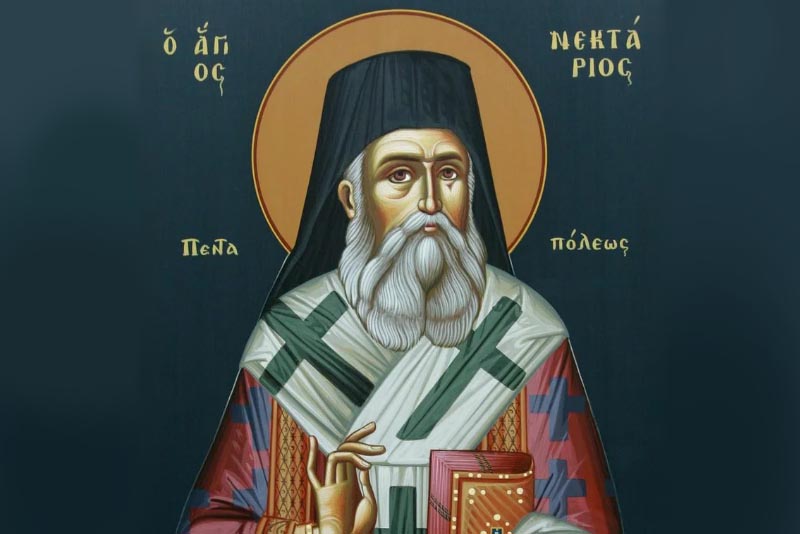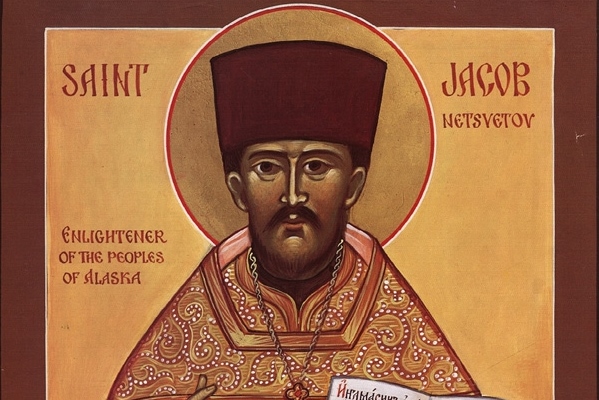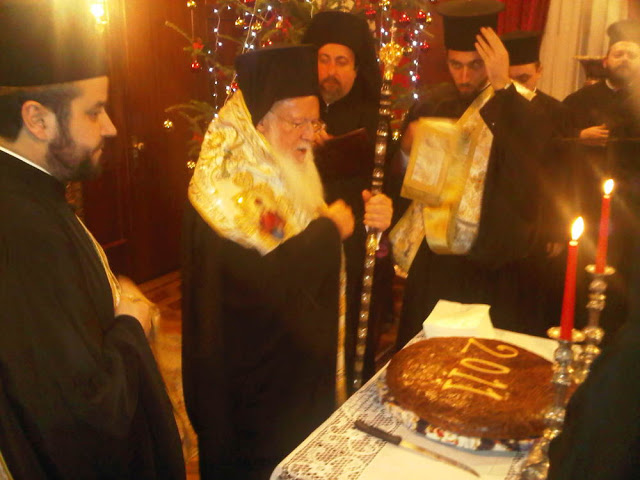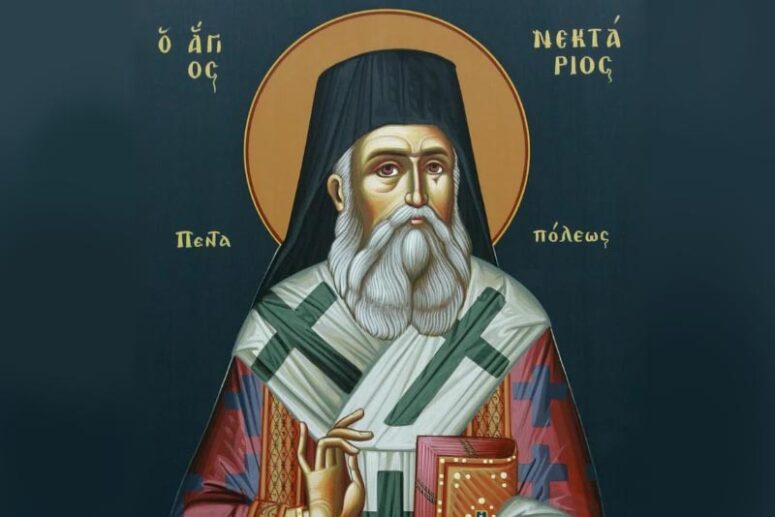
Nektarios of Aegina, is one of the most widely known of Greek Orthodox Saints. He was born on October 1st, 1846 in Silyvria, in Asia Minor (now occupied by Turkey). At Holy Baptism he was given the name Anastasios. His parents were simple pious Christians. They brought him up in a manner pleasing to God, and did what their very limited means allowed for his formal education. Having completed elementary school in his hometown, he left for the great city of Constantinople at the age of 14. There, he found employment as a shop assistant and was able to earn a meager living. As well as regularly attending the Divine Liturgy, he also read the Holy Scriptures and Writings of the Orthodox Elders of the Church on a daily basis. In 1866, at the age of 20, Anastasios went to the island of Chios, where he was appointed a teacher. After 7 years, he entered into the local monastery, under the care of the venerable elder Pachomios. After 3 years as a novice Athanasios was tonsured a Monk and given the name Lazarus.
A year later, he was ordained a Deacon and received the name Nektarios. Elder Pachomios, and a wealthy local benefactor convinced the young monk to complete his high school studies in Athens. From there Deacon Nektarios went to Alexandria, where he was cared for by the Patriarch of Alexandria, Sophronios. The Patriarch insisted that Nektarios complete his Theological studies, and so in 1885 he graduated from the School of Theology in Athens. The Patriarch of Alexandria ordained Deacon Nektarios to the Priesthood in 1886. His great service to the Church, prolific writings and teachings, energy and zeal led Fr Nektarios to be ordained as the Metropolitan of Pentapolis in Egypt.

As a Metropolitan he was greatly admired and loved by his flock for his virtue and purity of life. But this great admiration by the people aroused the envy of certain high officials, who plotted and succeeded in having the Blessed Metropolitan removed from office in 1890 – without a trial or any explanation whatsoever. He returned to Greece to become a monk and Preacher, to the great edification of the people. There the Blessed Metropolitan continued to write his now famous books.
In 1904, our Saint founded a monastery for women in Aegina, the Holy Trinity Convent. Under his guidance the Convent flourished. In 1908, the Blessed Nektarios, at the age of 62, retired from the Rizarios Ecclesiastical School and withdrew to Holy Trinity Convent in Aegina. There, for the rest of his life as a true monk and ascetic. He served as a confessor and spiritual guide to the nuns and even priests from as far as Athens and Piraeus. His Holy and pious life shone forth like a guiding light to all near him. Many would come to him for healing. Saint Nektarios was a great wonder-worker even while alive.
On September 20, 1920 one of the nuns took him to the local hospital, in spite of his protest. He was convulsing in pain from a long-standing ailment. He was admitted, and placed into a ward reserved for the poor and unwanted. There he stayed for two months among the sick and dying. At 10:30 in the evening of November 8th, although in the midst of terrible pains, in peace and at prayer he gave up his spirit unto God at the age of 74.
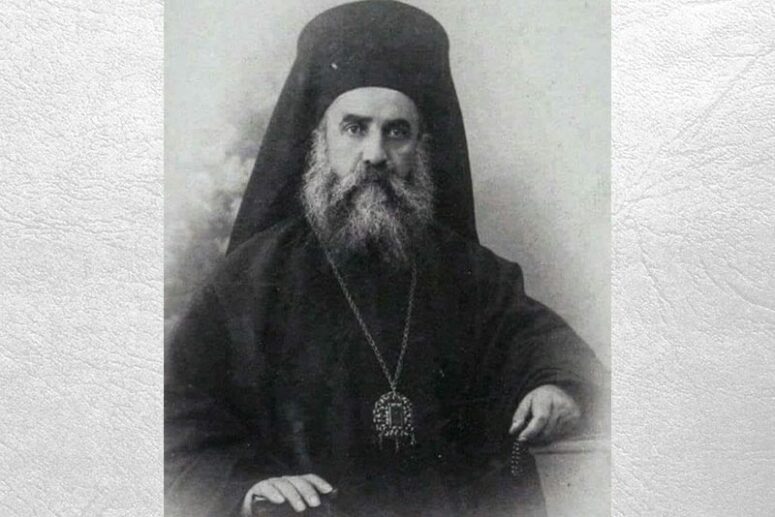
As soon as the Saint gave up his Spirit, a nurse came to prepare him for transfer to Aegina for burial. As the nurse removed the Saints sweater, she inadvertently placed it on the next bed, on which a paralytic lay. And O, strange wonder!, the paralytic immediately began to regain his strength and arose from his bed healthy, and glorifying God.
Some time after his repose, strangely a beautiful fragrance was emitted by his Holy body, filling the room. Many came to venerate his Holy relics prior to his burial. With amazement, people noted a fragrant fluid that drenched his hair and beard. Even after 5 months, when the nuns of the convent opened the Saints grave to build a marble tomb, they found the Saint intact in every respect and emitted a wonderful and heavenly fragrance. Similarly three years later, the Holy Relics were still whole and radiating the same heavenly fragrance.
The Orthodox Church proclaimed him as a Saint on April 20, 1961. His Blessed memory is celebrated by the Church on November 9th.
Source: https://www.orthodoxphotos.com/Holy_Fathers/St._Nektarios_of_Aegina/

